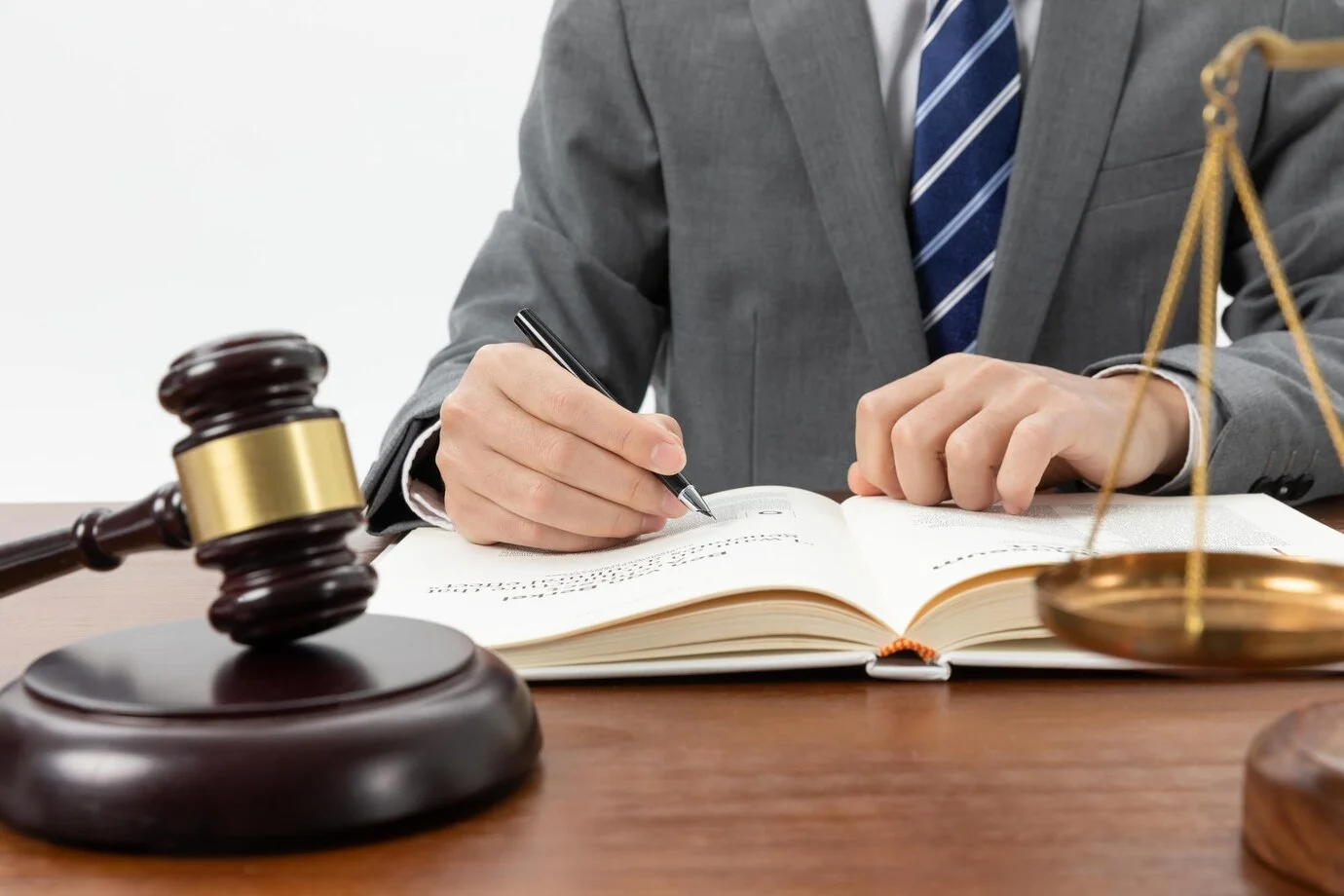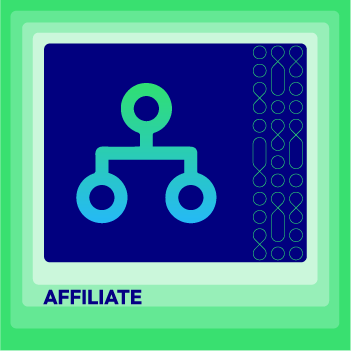How to Start an Online Bussiness?

According to eMarketer, global retail e-commerce sales are set to surpass $5 trillion in 2022, constituting more than 20% of total retail sales, with projections to exceed $7 trillion by 2025.
The rise in online shoppers offers both opportunities and challenges for retailers. To succeed, they must invest in technology, enhance user experience, implement digital marketing, analyze trends, understand customer preferences, and optimize logistics. Effective use of these strategies can lead to success in a competitive market.
In this blog post, we will explain the compelling reasons for starting an online business and offer practical insights on how to begin effectively.
Why Should You Start an Online Business?
Selling online can be started with a small amount of capital
Firstly, selling online helps reduce many types of costs, including: rent costs, inventory costs, and labor costs.
Secondly, starting an online business is affordable because digital platforms have low startup costs. Many e-commerce sites offer cheap or free setup options, reducing initial expenses.
Here are some suggestions to help you save costs when starting an online store:
- Use free websites: Many platforms, such as Wix, WordPress.com, Shopify, etc., offer free website creation services with basic features. Learn simple website design or hire affordable freelancers to save costs.
- Sell on social media: Use social media platforms like Facebook and Instagram to create a free online store, reach potential customers, and promote products. Join relevant groups to increase visibility. Livestreaming on these platforms is an effective way to introduce products and interact directly with customers, quickly attracting orders.
- Free advertising: Promote products for free by participating in relevant groups and forums. Use social media promotions and giveaways to attract customers.
They have significant growth potential
The rapid increase in the number of online shoppers: By 2025, e-commerce is projected to make up nearly 25% of global retail sales, while the worldwide internet user base is set to expand to 5.6 billion. This growth means greater potential exposure for your online brand, especially if you want to grow your business internationally.
Shopping habits change: Consumers increasingly prefer online shopping due to its convenience, product variety, competitive prices, and attractive promotions.
Impact of the COVID-19 pandemic: The pandemic accelerated the growth of e-commerce as consumers limited in-person shopping.
Online stores can stay open 24/7
Another advantage online businesses have over brick-and-mortar stores is their ability to operate 24/7, even during lockdowns and other disruptions. Once your website is live, you are always available to make a sale, allowing shoppers to order at any time.
You have freedom with your time and location

Running an online business frees you from the traditional 9-to-5 schedule. You can work whenever it suits you—early morning, late night, or weekends—allowing for a better work-life balance. Plus, you can manage your business from anywhere with an internet connection, whether at home, a coffee shop, or while traveling. You aren’t tied to a physical store, giving you the freedom to choose your work environment.
You can outsource your work
Running an online business lets you hire freelancers and remote workers from anywhere, giving you access to experts in web development, graphic design, marketing, and customer service at competitive rates.
Outsourcing is cheaper than hiring full-time employees. You pay for specific tasks or projects as needed, avoiding the costs of salaries, benefits, and office space.
How to Start an Online Business: Step-By-Step Guide
Starting an online business can be an exciting and rewarding venture. However, remember that building a successful online business takes time, dedication, and continuous learning. Be prepared to adapt your strategies as you learn more about your target audience and market.
Here’s a roadmap to guide you through the process:
1. Identify your niche
A business niche is a specialized market segment that focuses on specific products or services to meet unique customer needs. It helps businesses stand out and appeal to a specific audience. Here’s a step-by-step guide to identify and define your niche:
Discovery yourself
Self-discovery means exploring your interests, passions, values, and skills to find a niche that suits you. Identify what you excel at, what interests you most, and how your values can align with business opportunities. Evaluate your skills and expertise, pinpointing areas where additional development could help you achieve your entrepreneurial goals more effectively. This self-discovery phase is a crucial first step in your entrepreneurial journey, laying the foundation for making informed decisions that align with your strengths and aspirations.
Market research
Market research involves exploring potential niche markets based on your self-discovery. Look for underserved communities, emerging trends, or gaps in existing solutions. Assess the market size and growth potential of your chosen niche to ensure it can support your business goals. Analyze competitors within the niche to understand their strengths and weaknesses, and strategize how you can differentiate yourself effectively.
Important notes:
-
Stay informed: Keep up with industry trends and customer needs to stay relevant.
-
Don’t be afraid to niche down:: A focused, smaller niche lets you establish authority and serve specific customers.
-
Be flexible: Adapt your niche or business idea based on market feedback and new opportunities in the evolving business landscape.
2. Identify your target audience
In marketing and advertising, the target audience refers to the specific group of consumers most receptive to your message or product. They are the ideal customers you want to reach with your marketing efforts.
When defining your target audience, it’s important to consider these key factors:
- Demographics: Age, gender, income, education, and location
- Psychographics: Interests, values, lifestyle choices, and personality traits
- Needs & Pain Points: Identify the problems they seek solutions for and understand their frustrations
- Buying Habits: Determine where they prefer to shop and how they research products
- Online Behavior: Learn which social media platforms they use and which websites they frequent
Example: Starbucks - a highly recognized coffee brand around the world: Starbucks’ target audience is multifaceted, but here’s a breakdown to illustrate how they define it:
- Age: Primarily 22-60 years old, with a growing teen audience
- Income: Middle-class and above. While Starbucks caters to a broad range of income levels, its pricing strategy positions it as a premium brand
- Interests: Convenience, quality coffee, trendy atmosphere, social interaction
- Lifestyle: Busy professionals, students, social butterflies. Starbucks caters to people who are on-the-go and value a quick pick-me-up or a place to meet and socialize
Remember to avoid having an overly broad and unfocused customer base as it can lead to wasted resources and ineffective advertising costs.
3. Conduct competitive analysis
Competitive analysis involves comparing your competitors to your brand to understand their core differentiators, strengths, and weaknesses. It provides an in-depth breakdown of each competitor’s market position, sales and marketing tactics, growth strategy, and other critical business aspects to identify what they’re doing right and find opportunities for your business.
Remember, competitive analysis is an opportunity to learn from others. It is not about:
- Copying successful competitors
- Undercutting others’ pricing
- Conducting a one-time review
To analyze competitors effectively, first, identify them and their market position. Then, look at their products, pricing, and unique features. Evaluate their marketing strategies, including social media, ads, and customer engagement. Study their strengths and weaknesses through customer reviews. Also, analyze their financial performance and market share. By combining this information, you can find opportunities to set your business apart and gain a competitive edge.
4. Choose a platform for your sales channel

Choosing a platform for your sales channel depends on your business goals, target audience, and product type. Here are some popular options:
E-commerce Platforms
- Shopify: Great for small to medium-sized businesses with easy setup and a wide range of apps
- WooCommerce: Ideal for WordPress users looking for flexibility and customization
- BigCommerce: Suitable for growing businesses needing scalability
Marketplaces
- Amazon: Offers a massive audience and fulfillment services but with high competition and fees
- eBay: Good for selling unique or used items with an established user base
- Etsy: Perfect for handmade, vintage, and craft items
Social Media
- Facebook Shop: Integrates with Instagram and reaches a broad audience
- nstagram Shopping: Ideal for visually appealing products targeting younger demographics
- Pinterest: Useful for highly visual products, particularly in fashion and home decor
Direct Sales Platforms:
- Salesforce Commerce Cloud: For enterprises needing robust CRM integration and advanced features
- Magento: Highly customizable and suitable for businesses with technical expertise and complex needs. Many merchants choose this option when they want to build Magento website that can scale with complex requirements.
Read more: What is Magento? Should You Pick Magento for Your Business?
5. Choose a business name
Follow the following 2 steps:
1. Name your online store
- Choose a name for your online store involves reflects your brand’s identity with simplicity, memorability, and uniqueness
- Start by brainstorming names that align with your products and reflect your brand’s personality. For instance, for eco-friendly products, consider names like “GreenNest” or “EcoHaven” to emphasize sustainability
- Ensure the name is easy to spell and pronounce
2. Check availability and feedback
- Verify domain and social media availability for online consistency
- Avoid names that are too similar to competitors to stand out in your market
- Seek feedback to gauge name resonance among friends, family, and customers
- Confirm the name isn’t trademarked to prevent legal complications
- Choose a name that supports future business expansion and diversification
6. Develop a marketing strategy
A marketing strategy for an online store typically includes several specific aspects tailored to digital and e-commerce environments
6.1. Search Engine Optimization ( SEO)
SEO refers to the process of optimizing a website or online content to improve its visibility and ranking in search engine results pages (SERPs). The goal of SEO is to attract organic traffic from search engines like Google and Bing.
Improving SEO for your online store involves several key strategies:
- Keyword Research: Identify relevant keywords that potential customers use to search for products similar to yours.
- On-Page Optimization: Optimize product pages and category pages with targeted keywords in titles, meta descriptions, headers, and throughout the content.
- Mobile Optimization: Make sure your online store is responsive and performs well on mobile devices, as mobile friendliness is a significant factor in SEO rankings.
- High-Quality Content: Create unique, valuable content such as product descriptions, blog posts, and guides that address customer needs and provide useful information.
- Backlink Building: Earn links from authoritative websites in your industry to boost your site’s authority and credibility.
- Local SEO (if applicable): If you have a physical store or serve a specific geographic area, optimize for local search by creating a Google My Business profile and ensuring consistent NAP (Name, Address, Phone Number) information across the web.
- User Experience (UX): Enhance UX by improving site navigation, reducing bounce rates, and encouraging longer dwell times through engaging content and intuitive design.
6.2. Content marketing
Content marketing is a strategic approach to creating and sharing valuable, relevant content to attract and engage your target audience. It’s about providing informative and engaging content that builds trust and positions you as an expert in your field.
Writing good content involves understanding your audience and their needs, providing valuable insights or solutions, and presenting information in a clear, engaging manner. Here are some tips to improve your content efficiency:
- Begin with a catchy headline that clearly states the topic
- Use a friendly tone, avoid complex language, and organize your content with headings and bullets
- Back up your points with evidence or examples to build credibility
- Keep paragraphs brief, use visuals for clarity, and end with a clear call to action
- Proofread carefully for accuracy and coherence before publishing
- Use AI tools like ChatGPT, Gemini, and Grammarly to save time and optimize resources
Read more: Top 17+ Best Content Marketing Tools
6.3. Other parts of a marketing strategy
Search Engine Marketing (SEM): Using paid advertising (Google Ads, Bing Ads) to drive traffic to the online store.
Social Media Marketing: Utilizing platforms like Facebook, Instagram, Twitter, and LinkedIn to promote products, engage with customers, and build brand awareness.
Email Marketing: Sending targeted emails to subscribers for promotions, product updates, and personalized recommendations.
Conversion Rate Optimization (CRO): Analyzing and optimizing the online shopping experience to increase the percentage of visitors who make a purchase.
Customer Relationship Management (CRM): Implementing strategies to retain existing customers and encourage repeat purchases.
Analytics and Performance Tracking: Monitoring key metrics (e.g., traffic sources, conversion rates, ROI) to measure the effectiveness of marketing efforts.
Mobile Optimization: Ensuring the online store is fully responsive and optimized for mobile devices, as many customers shop via smartphones and tablets.
Customer Reviews and Testimonials: Encouraging and leveraging positive reviews to build trust and credibility with potential customers.
7. Handle all legal tasks

Running an online store involves several key legal considerations to ensure smooth operation and protection from liabilities:
7.1. Business formation and registration:
- Choose a Business Structure: Decide on a structure like sole proprietorship, partnership, LLC, or corporation. Each has unique legal and tax implications. Consult a lawyer for guidance.
- Register Your Business: Register with state and federal agencies, obtain a business license, and get a tax ID number.
7.2. Legal documents and agreements:
- Terms & Conditions: Outline terms of sale, return policy, shipping information, warranty disclaimers, and liability limitations to protect your business and inform customers.
- Privacy Policy: Disclose how customer data is collected, stored, and used to comply with data privacy regulations.
- Return Policy: Establish a clear, fair return policy to build trust and reduce disputes.
7.3. Intellectual property protection:
- Trademarks: Consider trademarking your brand name, logo, or slogan.
- Copyrights: Protect your original content, such as product descriptions and website design elements.
7.4. Payment processing:
- Merchant Account: Set up a merchant account to accept online payments securely.
- Payment Security: Ensure your website uses SSL encryption to protect customer payment information.
7.5. Taxes:
- Sales Tax: Determine if you must collect sales tax and register for a sales tax permit if required.
- Income Taxes: Understand your tax filing requirements and pay federal and state income taxes.
Note: This is not legal advice. Consult a lawyer specializing in e-commerce law for specific guidance tailored to your business and location. They can help draft necessary legal documents, navigate regulations, and ensure your online store operates legally and compliantly.
8. Optimize & grow your stores
Optimizing and growing your online store involves two key areas: ensuring smooth functionality and attracting more customers. Here are the essential strategies for each:
Store optimization:
- User Experience (UX): Make your website user-friendly with a clear layout, easy navigation, and fast loading times. Provide multiple payment options and a seamless checkout process to reduce cart abandonment.
- Product Optimization: Use high-quality images, detailed descriptions, and clear specifications. Incorporate relevant keywords on product pages to improve search engine ranking.
- Mobile-friendliness: Ensure your website is optimized for mobile devices, as many customers shop on phones and tablets.
Growing your store:
- Customer Engagement: Build strong relationships with customers by responding to inquiries promptly, offering excellent customer service, and running targeted promotions or loyalty programs.
- Data Analytics: Use analytics tools to track metrics like website traffic, conversion rates, and customer behavior. Analyze this data to improve and optimize marketing efforts.
Additional Tips to Boost Sales for Your Online Store
1. Build an Affiliate program
An affiliate program is a marketing strategy where you partner with individuals or other businesses (affiliates) who promote your products on their platforms. In return, they earn a commission for every sale made through their referral link.
Here’s a summary of creating an effective affiliate program for your online store:
- Set Goals & Identify Affiliates: Align your program with your marketing goals (brand awareness, sales, etc.) and target ideal affiliates like bloggers or social media influencers who resonate with your audience.
- Design & Promote: Develop a commission structure (percentage of sales, flat fee, etc.), program terms (rules & expectations), and promote it on your website and relevant online communities.
- Management & Support: Use affiliate management software to streamline tracking and payouts, and actively recruit affiliates by highlighting program benefits. Provide ongoing support with marketing materials and communication channels.
- Track & Improve: Monitor affiliate performance through analytics, identify successful affiliates, and optimize your program based on data. Regularly review and update commission structures and terms to stay competitive.
- Build Relationships: Offer exclusive benefits to top affiliates and prioritize clear communication to foster trust and transparency. Leverage testimonials and success stories to attract new partners.
2. Collaborate with KOLs
By collaborating with the right KOLs and developing engaging content, you can leverage their influence to significantly improve your online store’s reach, brand awareness, and sales. Here is how to empower your business with KOL strategies:
Choosing KOLs:
- Relevance > Reach: Target KOLs in your niche with an engaged audience.
- Values & Authenticity: Match your brand image with the KOL’s personality.
- Engagement Matters: Look for high engagement, not just a large following.
Crafting collaborations:
- Beyond Endorsements: Get creative with tutorials, reviews, or co-created content.
- Focus on Value: Provide educational content or exclusive offers to engage the audience.
- Be Transparent: Clearly disclose sponsored content to maintain trust.
Maximizing impact:
- Set Goals and track KPIs: Define your goals (brand awareness, sales) and track progress.
- Support Your Partner: Offer guidelines, product info, and creative assets to the KOL.
- Analyze Results: Track reach, engagement, and sales to see what works and adapt future strategies.
3. Conduct Dropshipping to save inventory costs

Dropshipping is a retail method where a store sells products without keeping them in stock. Instead, the store buys products from a third party and has them shipped directly to the customer.
Imagine you have an online store selling electronics. Instead of stocking the products yourself, you list items like smartphones and laptops on your website or your marketplace on Etsy. When a customer orders, you purchase the product from your supplier (the third party) who then ships it directly to your customer. This way, you never handle the inventory directly, reducing costs and logistical complexities.
When conducting drop shipping, here are some essential tips to keep in mind:
-
Choose reliable suppliers: Select reputable suppliers that can consistently deliver quality products on time. Research and possibly test suppliers before committing. Start by thoroughly researching potential suppliers. Look for reviews, testimonials, and ratings from other drop shippers or businesses that have worked with them. Check platforms like Alibaba, AliExpress, or industry-specific directories for supplier options.
-
Provide excellent customer service: Since you won’t handle product shipping, excellent customer service becomes even more critical. Respond promptly to inquiries and address any issues with orders swiftly. Confirm receipt of orders, provide tracking information promptly, and update customers on any delays or issues with their shipments.
-
Monitor and adjust pricing: Adjust your prices strategically during peak seasons, holidays, or promotional periods to attract more customers and capitalize on increased demand. Consider offering discounts, bundle deals, or free shipping to incentivize purchases.
-
Stay informed about trends: Stay updated with industry influencers, brands, and hashtags across platforms like Instagram, Twitter, and LinkedIn. Social media provides real-time updates on trends, new products, and consumer preferences. Additionally, use Google Trends to track search trends within your niche or product categories. Identify trending search terms and topics to anticipate demand shifts and leverage emerging trends effectively.
Final Words
In conclusion, starting an online business requires planning, dedication, and adaptability. Follow a structured approach: conduct market research, create a solid business plan, build a user-friendly website, implement effective marketing strategies, and maintain excellent customer service. Success takes time, so be patient, keep learning and adapting, and stay committed to your goals. With persistence and the right strategies, you can build a successful online business in today’s digital marketplace.








![Top 20+ Must-have Shopify Apps for 2025 [Free & Paid] - Mageplaza](https://cdn2.mageplaza.com/media/blog/must-have-shopify-apps/top-must-have-shopify-apps.png)
![[2025 Updates] Top 10+ Upsell Apps for Shopify - Mageplaza](https://cdn2.mageplaza.com/media/blog/best-upsell-shopify-app/cover.png)